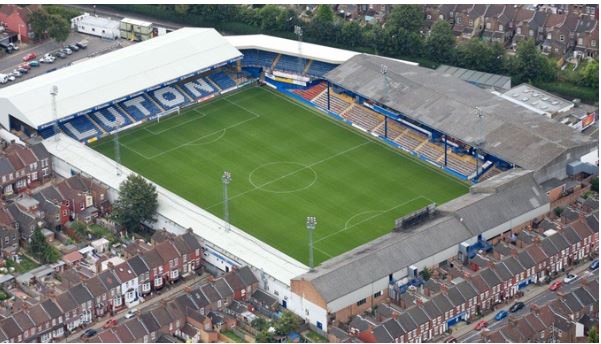
Luton Town Club, based in Bedfordshire, is a living symbol of determination and relentless endeavour. With a rich history, this team is not only a part of the local football community, but also a symbol of steadfastness and fighting spirit. Together 6686 bet Learn more about this club in the article below.
1. Overview of Luton Town Club

Overview of Luton Town Club
Luton Town Football Club has long been associated with elegance and fighting spirit in football. Established in 1885, the team has proven its position over the decades with its home stadium at Kenilworth Road.
Under the leadership of Chairman David Wilkinson and the direction of head coach Rob Edwards, Luton Town is constantly innovating and developing.
Participating in England’s highest tournament, the Premier League, Luton Town is not only a formidable opponent but also a symbol of perseverance and home team spirit. With a market value of about 18 million pounds, this team is always the focus of attention from both fans and experts.
2. History of the formation of Luton Club
Luton Town FC, originally known as Luton Excelsior, began its journey in 1885. Joining the Southern League in 1897, the team went through tough challenges and made its mark. his big step forward in the football industry.
Their peak came in the early 20th century when they won the Southern League championship in 1905–1906 and 1909–1910. With the introduction of the Football League Third Division in 1920, Luton Town stepped in and showed their perseverance by gaining promotion to the Second Division in 1931.
Under the guidance of Dally Duncan, the 1950s saw the team’s incredible rise, with a debut in the First Division in 1955. However, the rise and fall of Luton Town highlighted different eras in the following decades. Under the leadership of Harry Haslam, they returned to the First Division in 1974, ushering in a new era of excitement and ambition.
In the 1987–1988 season, Luton Town made history by defeating Arsenal in the Football League Cup Final at Wembley Stadium.
However, the late 1990s and early 2000s were difficult times for Luton Town with financial and management problems. In 2007, they faced heavy defeat when they were relegated from the Football League after being hit with financial penalty points. This puts them in a big test when they have to participate in non-league football for the first time.
3. Titles that Luton has achieved

Luton Town Club when promotedprizeForeignclassOlder brother
Luton Town has made a special mark in football history with many remarkable achievements. The team has won championships in several tournaments and gone through challenging times. The biggest highlight was promotion to the Premier League after difficult times in 2009.
Luton Town’s most notable achievement was winning the play-off against Coventry City, via penalty shoot-out, opening the door to their first Premier League appearance.
In addition, the team also has other impressive successes such as winning League One three times and winning the Championship League twice. They also won the EFL Cup in 2008-09, adding another mark to Luton Town’s trophy history. However, unfortunately, the team never had the opportunity to participate in the Champions League tournament.
4. What is special about Luton’s uniform and logo?
Luton Town are famous for their historically distinctive color combinations: orange, navy and white, and white and black. The club’s logo varies little, often inspired by the town’s emblem. From the color of the jersey to the badge, every detail represents Luton Town’s uniqueness and tradition in football.
5. Luton club stadium

Stadiumbelong toLuton Club
Luton Town’s stadium has undergone many changes throughout the team’s history. Starting from Dallow Lane, where players often had difficulty with smoke from trains, to the current Kenilworth Road ground, the stadium’s capacity has reached 10,356 spectators.
Upgrades and expansion of the stadium have been underway since 1986, when the all-seater grandstand and turf field were improved. However, Luton Town’s development does not stop there.
The team has revealed plans to build a new stadium at Power Court, with a capacity of up to 17,500 seats and expected to open in 2024. This project has received approval from Luton Area Council in 2019, with plans to expand capacity to 23,000 seats in the future.
Above is a biography of Luton Town Club and special information about this football club. Don’t forget to visit 6686 bet live football today to not miss the latest matches of this team!

Leave a Reply